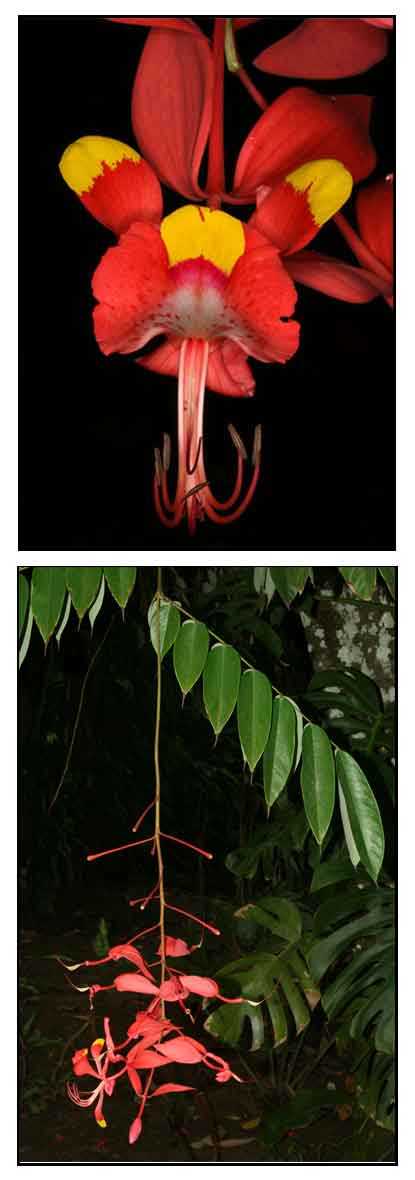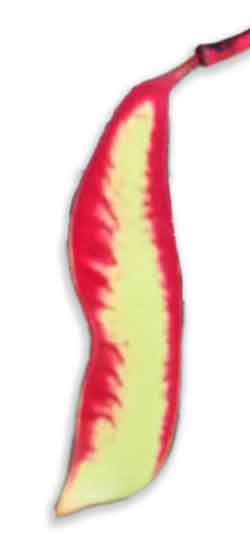
Family • Fabaceae
Pride of Burma
Amherstia nobilis Wall.
FLAME AMHERSTIA
Yingluo mu
| Scientific names | Common names |
| Amherstia nobilis Wall. | Amherstia (Engl.) |
| Orchid tree (Engl.) | |
| Flame amherstia (Engl.) | |
| Pride of Burma (Engl.) | |
| Queen of flowering trees (Engl.) | |
| Tree of heaven (Engl.) | |
| Amherstia nobilis Wall. is an accepted species. KEW: Plants of the World Online | |
| Amherstia nobilis is the only member of the genus Amherstia. | |
| Other vernacular names |
| BENGALI: Urbasi. |
| CHINESE: Yingluo mu. |
| GERMANY: Tohabaum. |
| COUNTRY: Name |
| MALAYALAM: Shimshipavrisham, Shimshipa viruksham. |
| MYANMAR: Thawka, Thawka-gyi. |
| SANSKRIT: Urbasi. |
| SRI LANKA: Kukul kakul. |
| TAMIL: Urvasi maram. |
Botany Distribution Constituents Properties Availability |
Updated November 2023
May 2020
![]()
 |
| PHOTOS / ILLUSTRATIONS |
| IMAGE SOURCE: Photographs: Amherstia nobilis (1) Pendulous cluster (2) Flower closup / © Scott Mori / Nathaniel Lord Britton Curator of Botany at The New York Botanical Garden. / images were taken at the Botanical Garden in Rio de Janeiro / click on image to go to source page / NYBG |
| OTHER IMAGE SOURCE: Photograph: Flowers / Noncommercial use / © nurseyLIVE |
| OTHER IMAGE SOURCE: Photograph: Pod - Amherstia nobilis / © Botanic Guru / / Noncommercial use / Image modified / click on image or link to go to source page / Botanic Guru |
Additional
Sources and Suggested Readings |
• |
DOI: It is not uncommon for links on studies/sources to change. Copying and pasting the information on the search window or using the DOI (if available) will often redirect to the new link page. (Citing and Using a (DOI) Digital Object Identifier) |
| List of Understudied Philippine Medicinal Plants |
| New plant names needed The compilation now numbers over 1,300 medicinal plants. While I believe there are hundreds more that can be added to the collection, they are becoming more difficult to find. If you have a plant to suggest for inclusion, native or introduced, please email the info: local plant name (if known), any known folkloric medicinal use, scientific name (most helpful), and, if possible, a photo. Your help will be greatly appreciated. |
• |
 |

 Gen info
Gen info Studies
Studies 